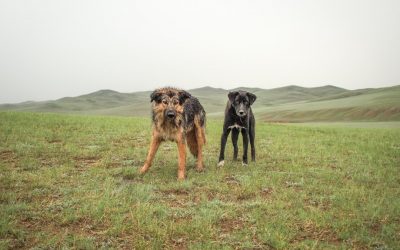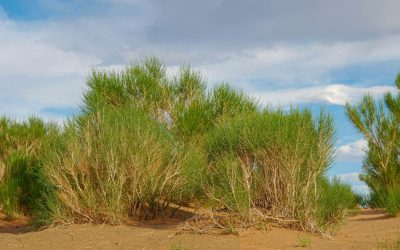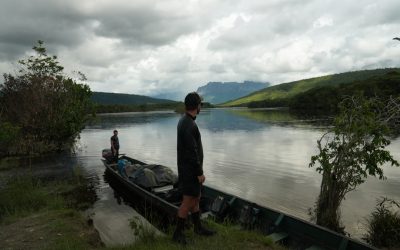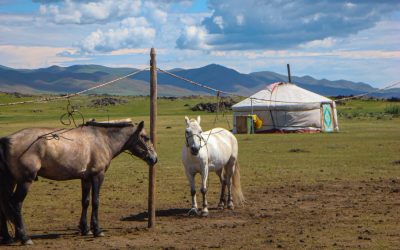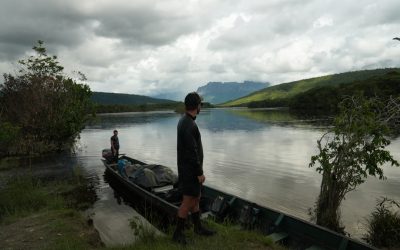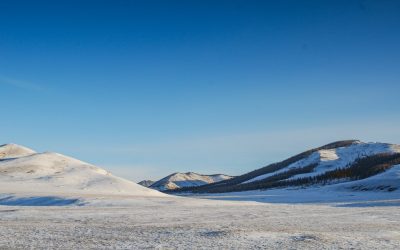Mongolia
(Mongol Uls (Mongolia))


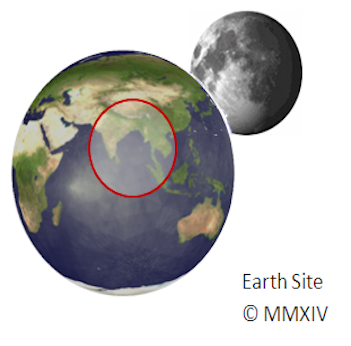




Capital: Pago Pago
Population (Estimated July 2012): 68,061
Area: 200km2 or 77mi2
Currency: United States Dollar (U.S.$)
Official Language: English; Samoan
Political Information: Unincorporated and unorganized territory of the US
Official Religion: No Official Religion (approximately 50% of the population is Christian Congregationalist, 20% are Roman Catholic and 30% are either protestant or have other religious beliefs)
Highest Mountain: Lata Mountain at 964m or 3162 feet
GDP Official Exchange Rate (OER is more precise at gauging a countries economic power)
(Estimated 2005): $462.2 million (US$) or (GBP)
GDP (OER) Per Capita (per member of the population estimated 2011): (US$) or (GBP)
GDP Purchasing Power Parity (PPP is good for gauging living conditions and use of resources but not as accurate as OER. This data has been calculated based on the sum value of all goods and services produced in the country valued at prices prevailing in the United States)
(Estimated 2007): $575.3 million (US$) or (GBP)
GDP (PPP) Per Capita (per member of the population estimated 2007): $8,000 (US$) or (GBP)
Time Zone (GMT/UTC): -11:00
Counties/Provinces/States: three districts and two islands at the second order; Eastern, Manu’a, Rose Island, Swains Island, Western
Sources: CIA World Fact Book, Encyclopaedia Britannica.
Mongolia, a landlocked country in Central Asia, is known for its vast landscapes, rich history, and unique culture. With a population of around 3 million people, Mongolia is one of the least densely populated countries in the world. It shares borders with Russia to the north and China to the south, east, and west.
Geography and Climate of Mongolia: From the Gobi Desert to the Altai Mountains
Mongolia’s geography is incredibly diverse, ranging from the arid Gobi Desert in the south to the rugged Altai Mountains in the west. The Gobi Desert is one of the largest deserts in the world and covers a significant portion of southern Mongolia. It is characterized by its vast expanses of sand dunes, rocky outcrops, and sparse vegetation.
In contrast, the Altai Mountains offer a stunning landscape of snow-capped peaks, deep valleys, and alpine meadows. This mountain range is home to several endangered species, including the snow leopard and the Altai argali sheep.
The climate in Mongolia is extreme, with long, cold winters and short, hot summers. Temperatures can drop as low as -40 degrees Celsius (-40 degrees Fahrenheit) in winter and rise above 30 degrees Celsius (86 degrees Fahrenheit) in summer. The country experiences very little rainfall throughout the year, making it a dry and arid environment.
History of Mongolia: Nomadic empires, communism, and democracy
Mongolia has a rich history that dates back thousands of years. It was once home to powerful nomadic empires, most notably the Mongol Empire founded by Genghis Khan in the 13th century. At its height, the Mongol Empire was the largest contiguous empire in history, stretching from Eastern Europe to Asia.
In the 20th century, Mongolia went through a period of communist rule under the Soviet Union. The Mongolian People’s Republic was established in 1924 and lasted until 1992. During this time, Mongolia adopted a socialist economic system and aligned itself with the Soviet Union.
Since the transition to democracy in 1992, Mongolia has made significant strides in political and economic reforms. It is now a parliamentary democracy with a multi-party system. The country has also embraced market-oriented reforms and has seen rapid economic growth in recent years.
Culture and Traditions of Mongolia: Throat singing, yurts, and Naadam festival
Mongolia has a unique culture that is deeply rooted in its nomadic heritage. One of the most distinctive aspects of Mongolian culture is throat singing, also known as Khöömei. This traditional form of singing involves producing multiple pitches simultaneously, creating a mesmerizing and haunting sound.
Another iconic symbol of Mongolian culture is the yurt, a portable dwelling used by nomadic herders. Yurts are made from a wooden frame covered with felt and can be easily assembled and disassembled. They provide warmth and shelter in the harsh Mongolian climate and are still used by many nomadic families today.
The Naadam festival is one of Mongolia’s most important cultural events. It takes place every July and showcases the “Three Manly Games” of wrestling, horse racing, and archery. These traditional sports have deep historical roots and are an integral part of Mongolian identity.
Mongolian Cuisine: Meat-heavy dishes and dairy products
Mongolian cuisine is known for its hearty and meat-heavy dishes, reflecting the country’s nomadic lifestyle. One of the most famous Mongolian dishes is khorkhog, which consists of mutton or goat meat cooked with hot stones in a metal container. The stones heat up the meat from the inside, resulting in tender and flavorful meat.
Dairy products also play a significant role in Mongolian cuisine. Airag, a fermented mare’s milk, is a popular traditional beverage. It has a slightly sour taste and is often consumed during special occasions and festivals. Other dairy products such as cheese, yoghurt, and butter are also commonly used in Mongolian cooking.
Wildlife and Nature in Mongolia: Endangered species and national parks
Mongolia is home to a diverse range of wildlife and boasts several national parks and protected areas. The country’s vast and untouched landscapes provide habitats for many endangered species, including the snow leopard, Gobi bear, and wild Bactrian camel.
One of the most famous national parks in Mongolia is the Gobi Gurvansaikhan National Park, located in the southern part of the country. It is known for its stunning desert landscapes, towering sand dunes, and unique wildlife. The park is also home to the famous Flaming Cliffs, where dinosaur fossils have been discovered.
Other notable national parks in Mongolia include Khustain Nuruu National Park, which is known for its population of wild horses called Przewalski’s horses, and Terelj National Park, which offers breathtaking scenery of granite rock formations and lush valleys.
Economy of Mongolia: Mining, agriculture, and tourism
Mongolia’s economy is primarily driven by mining, agriculture, and tourism. The country is rich in mineral resources, including coal, copper, gold, and uranium. Mining plays a crucial role in the economy and contributes significantly to export revenues.
Agriculture also plays an important role in Mongolia’s economy, with livestock farming being the mainstay of rural communities. Nomadic herders raise livestock such as sheep, goats, horses, and camels for meat, milk, and wool.
Tourism has been growing steadily in Mongolia in recent years. The country’s unique landscapes, rich cultural heritage, and opportunities for adventure travel attract visitors from around the world. Tourists can explore the Gobi Desert, go horseback riding in the Mongolian steppe, or experience the traditional nomadic way of life.
Education and Healthcare in Mongolia: Challenges and Improvements
Mongolia faces challenges in its education and healthcare systems. While education is free and compulsory, there are disparities in access to quality education, particularly in rural areas. The government has been working to improve educational infrastructure and increase teacher training programs to address these issues.
In terms of healthcare, Mongolia has made significant improvements in recent years. The government has invested in healthcare infrastructure and implemented reforms to provide better access to healthcare services. However, there are still challenges in rural areas, where access to healthcare facilities can be limited.
Politics and Government of Mongolia: Parliamentary democracy and foreign relations
Mongolia is a parliamentary democracy with a multi-party system. The President is the head of state, while the Prime Minister is the head of government. The Parliament, known as the State Great Khural, is responsible for making laws and overseeing the government.
Mongolia maintains friendly relations with both Russia and China, its two neighbouring countries. It also has diplomatic relations with countries around the world and actively participates in international organizations such as the United Nations and the World Trade Organization.
Tourism in Mongolia: Adventure travel and cultural experiences
Tourism in Mongolia offers a unique blend of adventure travel and cultural experiences. Visitors can explore the vast landscapes of the Gobi Desert, ride horses through the Mongolian steppe, or trek through the Altai Mountains. There are also opportunities to experience traditional nomadic life by staying in a yurt and participating in activities such as horseback riding and milking livestock.
For those interested in cultural experiences, Mongolia offers a rich heritage to explore. From visiting Buddhist monasteries to attending traditional festivals such as Naadam, there are plenty of opportunities to immerse oneself in Mongolian culture.
Conclusion: Recap of Mongolia’s unique features and attractions, encouraging readers to visit.
Mongolia is a country that offers a unique blend of stunning landscapes, rich history, and vibrant culture. From the arid Gobi Desert to the snow-capped peaks of the Altai Mountains, the country’s diverse geography provides endless opportunities for adventure and exploration. The nomadic heritage of Mongolia is still alive today, with traditional practices such as throat singing and yurt-dwelling being an integral part of the culture. The country’s cuisine, wildlife, and national parks further add to its appeal. With improvements in infrastructure and a growing tourism industry, now is the perfect time to visit Mongolia and experience its beauty and charm firsthand.
Political Boundaries of Mongolia: Provinces, Districts, or Historical Boundaries.
Political boundaries are the lines that separate one political entity from another, defining the extent of its territory and jurisdiction. They play a crucial role in understanding a country’s governance and history, as they shape the relationships between different regions and communities within a nation. In the case of Mongolia, political boundaries have evolved over time, reflecting its rich history and interactions with neighbouring countries. Mongolia is a landlocked country located in East Asia, bordered by Russia to the north and China to the south, east, and west. It covers an area of approximately 1.6 million square kilometers, making it the 18th largest country in the world. The political boundaries of Mongolia have been shaped by various historical events, including the rise and fall of the Mongol Empire, colonization by the Qing Dynasty, and the influence of the Soviet Union. Understanding these boundaries is essential for comprehending Mongolia’s governance structure and its relationship with its neighbours. Summary Mongolia is divided into 21 provinces and 1 municipality, each with its own local government. The historical boundaries of Mongolia have changed over time, from the Mongol Empire to modern times. Political boundaries have a significant impact on Mongolia’s economy and society, with some regions being more developed than others. Local government plays a crucial role in managing Mongolia’s political boundaries, but faces challenges such as limited resources and capacity. The future of Mongolia’s political boundaries presents both opportunities and threats, including potential conflicts with neighbouring countries and the need to balance economic development with environmental conservation. The Administrative Division of Mongolia: Provinces and Districts Mongolia is divided into 21 provinces (aimags)...
Climate Zones of Mongolia: Different climate regions Of Mongolia
Mongolia, located in Central Asia, is known for its vast and diverse landscapes. From the towering Altai Mountains in the west to the expansive Gobi Desert in the south, Mongolia’s geography plays a significant role in shaping its climate. Understanding Mongolia’s climate zones is crucial for various reasons, including agriculture, tourism, and sustainable development. Summary Mongolia has six distinct climate zones, each with its own unique characteristics. The Altai Mountains have a cold and dry climate, with temperatures dropping to -40°C in winter. The Gobi Desert has a semi-arid climate, with hot summers and cold winters. The Khentii Mountains have a humid continental climate, with heavy rainfall in summer and snow in winter. Northern Mongolia has a subarctic climate, with long, cold winters and short, cool summers. Central Mongolia has a warm temperate climate, with hot summers and cold winters. Elevation plays a significant role in determining climate in Mongolia, with higher elevations generally being colder and drier. Climate change is having a significant impact on Mongolia’s climate zones, with rising temperatures and changing precipitation patterns. Traditional livelihoods in Mongolia, such as nomadic herding, have adapted to the country’s harsh climate over centuries. There are opportunities for sustainable development in Mongolia’s climate zones, such as renewable energy and eco-tourism. The Cold and Dry Climate of the Altai Mountains The Altai Mountains, located in western Mongolia, experience a cold and dry climate. The region is characterized by long, harsh winters with temperatures dropping well below freezing and short, cool summers. The altitude of the mountains contributes to the extreme cold temperatures experienced in this region. One unique feature of the...
Cultural or Historical Sites of Mongolia: Important Cultural Landmarks or Historical Sites In Mongolia
Mongolia, a landlocked country in East Asia, is known for its rich cultural and historical heritage. With a history that dates back thousands of years, Mongolia has been home to various civilizations and empires, leaving behind a legacy that is still celebrated today. From the magnificent Gobi Desert to the enchanting beauty of Khuvsgul Lake, Mongolia offers a plethora of cultural and natural wonders that need to be preserved and promoted for future generations. Preserving and promoting Mongolia’s cultural heritage is of utmost importance. It not only helps in maintaining the country’s unique identity but also contributes to the overall development of tourism and economy. By showcasing its rich history and cultural traditions, Mongolia can attract tourists from all over the world, boosting its tourism industry and creating employment opportunities for the local population. Additionally, preserving cultural heritage helps in fostering a sense of pride and belonging among the Mongolian people, strengthening their national identity. Summary Mongolia boasts a rich cultural and historical heritage. The Gobi Desert offers a glimpse into Mongolia’s ancient past. Khuvsgul Lake is a stunning natural wonder with cultural significance. Erdene Zuu Monastery is a testament to Mongolia’s Buddhist legacy. Orkhon Valley is a cradle of nomadic civilization with majestic landscapes. The Magnificent Gobi Desert: A Window to Mongolia’s Ancient Past The Gobi Desert, spanning across southern Mongolia and northern China, is one of the most iconic landscapes in the world. It is not only a vast expanse of sand dunes and rocky mountains but also a window to Mongolia’s ancient past. The Gobi Desert has played a significant role in shaping Mongolian history and...
Natural Resources of Mongolia: Where Natural Resources are located In Mongolia
Mongolia, a landlocked country in East Asia, is known for its vast and diverse natural resources. The country has a rich history of resource extraction, dating back to ancient times when nomadic tribes would mine for gold and other precious metals. Today, Mongolia’s natural resources play a crucial role in its economy and the livelihoods of its people. Mongolia is blessed with abundant mineral resources, including coal, copper, gold, and uranium. These minerals are found beneath the Earth’s surface and have been a major driver of economic growth in the country. The mining industry in Mongolia has attracted significant foreign investment and has become a key sector in the country’s economy. Summary Mongolia is rich in natural resources, including minerals, coal, oil and gas, water, timber, wildlife, agricultural resources, and renewable energy. Mineral resources are a major contributor to Mongolia’s economy, with copper, gold, and coal being the most important. Coal is the backbone of Mongolia’s economy, accounting for over 90% of its total mineral exports. Mongolia has significant potential for oil and gas development, with exploration and production activities increasing in recent years. Water resources are crucial for Mongolia’s survival, with the country facing challenges such as water scarcity, pollution, and climate change. Mineral Resources: Riches beneath the Earth’s Surface Mongolia is home to vast mineral resources that have the potential to transform the country’s economy. The major minerals found in Mongolia include coal, copper, gold, uranium, and rare earth elements. These minerals are used in various industries, such as construction, manufacturing, and energy production. Coal is one of the most important mineral resources in Mongolia. It is...
Population Density of Mongolia
Mongolia, a landlocked country located in East Asia, is known for its vast and sparsely populated landscapes. With a total area of 1.6 million square kilometers, Mongolia is the 18th largest country in the world, but it has one of the lowest population densities. As of 2021, Mongolia has a population of approximately 3.3 million people, resulting in a population density of only 2 people per square kilometer. Understanding population density is crucial for policymakers and researchers in Mongolia as it provides insights into the distribution of people across the country. It helps identify areas that are densely populated and require more resources and infrastructure development, as well as areas that are sparsely populated and may need targeted interventions to improve living conditions. Additionally, understanding population density can inform decisions related to urban planning, resource allocation, and environmental sustainability. Summary Mongolia has a low population density of only 2 people per square kilometre. Factors affecting population density in Mongolia include climate, geography, and economic opportunities. Urbanization has led to an increase in population density in Mongolia’s cities, particularly Ulaanbaatar. Rural-urban migration has also contributed to population density in Mongolia’s urban areas. Historical trends show that population density in Mongolia has fluctuated over time, with periods of growth and decline. Factors Affecting Population Density in Mongolia Several factors contribute to the low population density in Mongolia. Geographically, Mongolia is characterized by vast steppes, deserts, and mountains, which make up a significant portion of its land area. These geographical features pose challenges for human settlement and agriculture, limiting the availability of arable land and water resources. As a result, the majority...
Terrain and Topography of Mongolia: mountains, valleys, and plains.
Mongolia, a landlocked country in East Asia, is known for its vast and diverse terrain. From majestic mountains to expansive plains, Mongolia offers a wide range of natural wonders for visitors to explore. The country’s topography is characterized by rugged mountains, deep valleys, rolling plains, and dense forests. This article will provide an in-depth look at Mongolia’s terrain and topography, highlighting the unique features and attractions of each region. Summary Mongolia’s terrain and topography is diverse and unique. The majestic mountains of Mongolia offer breathtaking views and challenging hikes. Exploring the valleys of Mongolia reveals hidden gems and stunning landscapes. The vast plains of Mongolia are home to nomadic herders and their livestock. The Altai Mountains are a natural wonder of Mongolia, with snow-capped peaks and ancient petroglyphs. The Majestic Mountains of Mongolia Mongolia is home to several mountain ranges, each with its own distinct characteristics. The Altai Mountains, located in the western part of the country, are known for their snow-capped peaks and stunning alpine scenery. This range is a popular destination for outdoor enthusiasts, offering opportunities for hiking, mountaineering, and wildlife spotting. In the north, the Khangai Mountains dominate the landscape. These mountains are known for their lush green valleys and pristine lakes. The Khangai Mountains are an important cultural and historical site in Mongolia, with many ancient ruins and sacred sites scattered throughout the region. In the south, the Gobi Altai Mountains rise up from the Gobi Desert. This range is known for its unique rock formations and dramatic cliffs. The Gobi Altai Mountains are also home to several rare and endangered species, making it a...





















